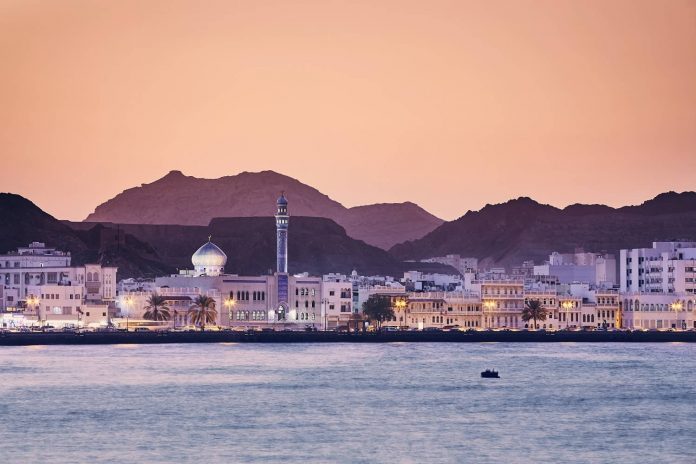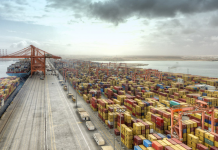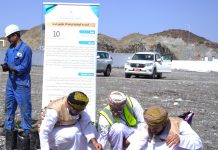Oman’s economy is expected to grow at a faster pace in 2020, partly on the back of lower interest rates and a more supportive business climate
The year 2020 is going to be a momentous year for the Sultanate of Oman in many respects. The country is celebrating the 50th year of its Blessed Renaissance under the wise leadership of His Majesty Sultan Qaboos bin Said. On the economic front, 2020 will turn out to be the final year in the Sultanate’s Ninth Five-Year Plan.
Oman’s economy is expected to grow at a faster pace in 2020, partly on the back of lower interest rates and a more supportive business climate. Continued or deeper OPEC+ oil production cuts could weigh on growth, however. FocusEconomics Consensus Forecast forecasts growth of 2.4 per cent in 2020 and 2.9 per cent in 2021.
While oil production dipped in January–October in 2019 from the same period a year earlier, the non-oil economy appears to be in better shape. Inflation averaged a mere one-fifth of a percent in January–October, which should have supported consumers’ purchasing power and, by extension, private consumption. Moreover, a recent improvement in the ease of doing business in Oman, as reported by the World Bank in October, should have supported fixed investment growth. On the other hand, annual bank lending growth remained lackluster despite marginally accelerating in October, potentially undermining investment. Meanwhile, looking at the public purse, the fiscal deficit narrowed by a fifth in January–September compared to the same period a year earlier, thanks to higher revenue.
Highest growth in GCC?
According to a World Bank report, Oman is predicted to have the highest growth among the countries of the Gulf Cooperation Council in 2020. The Sultanate’s growth rate is expected to spike to six per cent during the year, thanks to returns from the Tanfeedh programme for economic diversification, as well as continued investments to expand its oil and gas sector, with the Khazzan gas fields being targeted for significant expansion. The figures were mentioned in the World Bank’s Gulf Economic Monitor as well as its Oman: Economic Update for April 2019.
While growth in Oman is predicted to dip to 1.2 per cent in 2019 from 2.1 per cent last year, it was forecast to jump up to six per cent in 2020. The report also added that diversification investment would continue to support growth in 2021 and the medium term. In comparison, Bahrain’s growth is projected to reach 2.2 per cent in 2020, while Kuwait’s economy is likely to grow at around three per cent. Qatar’s growth is rated at 3.4 per cent, and in Saudi Arabia, growth is expected at the rate of three per cent. The UAE’s growth rate is also forecast at three per cent in 2020.
The Oman Economic Update said: “Growth is projected to slow to 1.2 per cent in 2019 as Oman’s commitment to the December 2018 OPEC+ output cut constrains oil production. There will be a one-off spike in growth to six per cent in 2020 as the government plans to significantly increase investment in the Khazzan gas field. The potential boost from the diversification investment spending would continue supporting growth in 2021 and the medium term.”
The Gulf Economic Monitor of the World Bank added: “The start of production at the $5bn Raba Harweel Project, the largest undertaking by Petroleum Development Oman, and a planned sizeable investment in the Khazzan gas field, jointly owned by British Petroleum and Oman Oil and slated to increase natural gas production by 50 per cent to 1.5 billion cubic feet per day, could spur GDP growth in Oman to 6 per cent in 2020.”
“Thereafter, growth is projected to slide back to 2.8 per cent in 2021,” according to the World Bank report, “Growth towards the end of the forecast period is expected to be supported by private non-oil investment, including from allowing a hundred per cent foreign ownership of businesses (subject to a threshold on capital), implementing a proposed new Foreign Capital Investment Law, liberalising key sectors of the economy, and increasing the use of Public Private Partnerships (PPP).”
Economists and financial planners in Oman said this growth rate reflected the expected positive outcomes of the Tanfeedh plans. Oman continues to offer a strong value proposition for businesses, with a wide range of industrial estates and special economic zones (SEZs) adding to the attraction. Oman’s geostrategic location is also a considerable advantage, while ports and airports connect it to some of the world’s busiest trading routes and most dynamic markets. The push to increase manufacturing investment is further supported by government plans to quicken the pace of privatisation.
Regional Update
The Middle East economy is expected to recover at an estimated 2.1 per cent in 2020. According to ICAEW’s latest Economic Update, overall improvement in the region will be primarily driven by an uptick in the region’s two largest economies, Iran and Saudi Arabia, following a dire 2019. However, the accountancy and finance body says that the Middle East GDP growth declined modestly in 2019 by 0.5 per cent, down from an estimated growth of 0.7 per cent in 2018. In the GCC, oil remains the dominant driver of growth. Consequently, low-trending prices and ongoing output caps pose a challenge for GCC countries that are heavily reliant on hydrocarbon receipts to balance their budgets.
Middle East Q4 2019, produced in partnership by ICAEW and Oxford Economics, says the downward revision to Middle East GDP growth is a result of the Iranian economy contracting by about 9.3 per cent in 2019, due to tough US sanctions which weighed heavily on aggregate headline growth. In addition, Saudi Arabia’s economy is seeing minimal growth of around 0.1 per cent, weighed down by the renewed oil production cuts by Opec+.
According to the report, the ongoing weakness of the global economy will keep a lid on oil prices, maintaining a key headwind for GCC commodity-dependent economies. Following the attack in September 2019 on Saudi Arabia’s oil facilities, that halted almost 5 per cent of global oil supply, oil prices jumped by 15 per cent in one day – the biggest climb in 30 years. Once oil production was restored, oil prices swiftly fell back again, to around $60 per barrel (pb), underpinning the ICAEW and Oxford Economics 2019 and 2020 oil price forecasts of $63.8pb and $64.6pb respectively.
In 2020, non-oil growth is expected to recover to around 2.8 per cent year on year, from an estimated 2.1 per cent this year, supported by high government spending. In Saudi Arabia, 2019 is shaping up to be a year of underspending, according to the 2020 budget. However, an increased stimulus for households and industry is providing a boost to non-oil sectors as well as private sector consumption – which has already risen by 4.4 per cent year on year in real terms in the first half of the year (H1).
However, with lower oil exports depressing revenues, there is less scope to maintain stimulus. Spending restraint would weigh on near- and medium-term non-oil output growth estimates. This is especially true given the generally weaker sovereign balance sheets compared with a few years ago. Oil prices stand significantly below most producers’ fiscal breakeven levels this year – prices required to meet expenditure targets – while running balanced accounts. In the region, only Kuwait and Qatar are able to cover spending needs. For Saudi Arabia, for instance, the Economic Update report forecasts that the fiscal deficit will widen to 6.8 per cent of GDP this year from 5.9 per cent in 2018.
Michael Armstrong, FCA and ICAEW regional director for the Middle East, Africa and South Asia (MEASA), said, “2019 has been a challenging year for Middle Eastern economies, due to geopolitical tensions, OPEC-led oil output cuts and ongoing weakness in the non-oil sector. However, despite lower oil prices this year, we are pleased to see signs of pick-up in the non-oil economy, supported by government spending.
“We believe there is plenty of room for improvement. To achieve a more diverse and sustainable economy, regional governments must remain proactive in implementing the necessary fiscal reforms aimed at achieving economic diversification, and continue to support their economies with pro-growth initiatives.”
By contrast, monetary policy is becoming more supportive. GCC banks have followed moves by the US Federal Reserve, which should be supportive of private sector activity. Kuwait’s central bank joined in the easing in October, having skipped the previous two cuts as the basket of currencies that the Kuwaiti dinar is calculated against allows some flexibility to deviate from the path carved out by the Federal Reserve.






